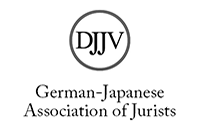The Birth of the Parliamentary Democracy in Japan: An Historical Approach
Abstract
Japanese constitutional legal history does not constitute part of the obligatory legal curriculum in Hungary. There are limited numbers of researchers and references available throughout the country. However, I am convinced that neither legal history nor comparative constitutional law could be properly interpreted without Japan and its unique legal system and culture.
Modern Japanese legal and constitutional history has been thoroughly investigated in the past few decades, also outside Japan by Western scholars. Outstanding references have become available throughout the world. However, it might be added that while a group of works focus primarily on the civil-law traditions that influenced Japan under the Meiji period, another groups of studies put the “current” Japanese Constitution in the centre of their research. All in all, following nearly a decade of research on different aspects of Japanese law, I have the impression that a historical approach concerning Japanese constitutional law does not always enjoy enough attention. Post-war Japan cannot be interpreted without pre-war Japan, or focusing primarily upon the Shōwa Constitution might lead to a one-sided approach.
Japan’s first written constitution was the Meiji Constitution, or the Constitution of Imperial Japan, which entered into force on 29 November 1890. It was the first modern written constitution of Asia, based upon Prussian traditions. The centre of the Constitution was the emperor, who as the sovereign was sacred and inviolable and was regarded as the religious head of the Shintō state religion. This was also symbolized by the fact that the Imperial Household Law belonged to the exclusive competence of the emperor and stood in equivalent force to the Constitution. The Meiji Constitution established a limited constitutional monarchy but not an absolutist one. However, in the 1920s and 1930s it was severely tested as it ceded the floor for the nearly fourteen years of the Taishō democracy and also for the roughly fourteen years of Shōwa extreme militarism.
The post-war constitutional framework corresponds to democratic societies: the three different branches of state powers have their clearly defined competences, responsibilities and checks, whereby none of them is able to carry out all the state powers independently from the others. We can add that the Diet became stronger and politically more significant, the judiciary enjoys more independence and the Cabinet bears political responsibility with all its consequences.
Although popular sovereignty is granted by the Constitution and the Diet became the highest organ of the state power and the sole law-making organ, the practical side of popular sovereignty seems to have developed in a unique Japanese way. It follows that not just the person of the emperor was retained in the post-war period, but also some of its pre-war prerogatives continue to be applied as part of unwritten but deeply rooted social traditions.






